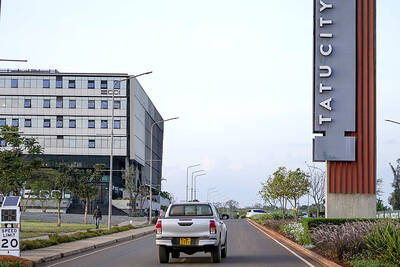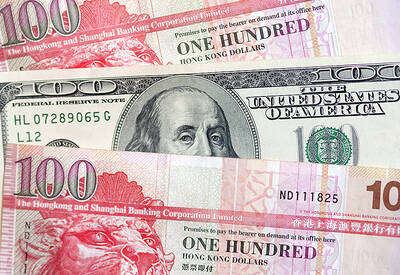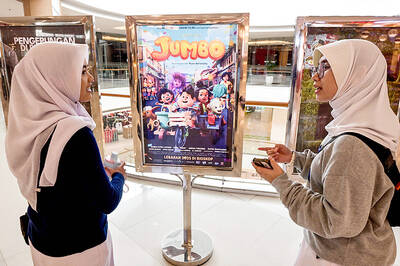The Japanese are having fewer children and Disneylands abroad face problems, but the magic has not dimmed where Mickey and friends are marking 25 years with fans as loyal as ever.
Tokyo Disneyland opened in the suburbs of Tokyo on April 15, 1983, as the company’s first theme park outside the US.
Built on reclaimed land in Tokyo Bay dubbed “Maihama” — a Japanese take on Miami Beach near Florida’s Disney World — the resort has sprawled out to include hotels, a shopping mall, an aqua park and soon a permanent Cirque du Soleil.
“The moment I arrive at Maihama Station, my heart starts singing with its legs doing dance steps,” said Toshiko Sugano. “I turn 58 next month, so I’ll have to come back to celebrate.”
She was spending the day at Disneyland with her 31-year-old daughter and 54-year-old sister, all still enchanted since they first came a quarter century ago.
“It’s a totally different world here, away from real everyday life,” the elder Sugano said.
Her daughter, Izumi, a Disney maniac who has visited the park more than 100 times, teased her mother over how much she has warmed to the characters.
“She was initially taken aback when Mickey put his arm around her shoulder. Now she springs towards Mickey if she finds him,” Izumi said.
As Japan’s birth rate sinks to one of the world’s lowest, Tokyo Disneyland has already set its sights on people like the Suganos, the generation who grew up admiring Disney cartoons on TV and took their children to the park at the opening.
Oriental Land Co Ltd, the Japanese company that runs the park under a license contract with the Walt Disney group, in March launched a cut-rate pass for visitors aged 60 or older.
Sugano is determined to get one.
“It’s two more years to go. Knowing that I’ll be able to get it, it’s quite nice getting old,” she said.
Takashi Fujisawa, 31, came all the way from Hokkaido with his wife and three-year-old son. It was his second visit after the first trip 16 years ago with his parents.
“I feel strange coming back here as a father bringing a son myself,” he said, carefully adjusting the position of a baby stroller to take pictures of the sleeping boy with Cinderella Castle in the background.
The number of visitors to Disneyland and DisneySea, the water park opened in 2001, has stood at record levels of around 25 million in recent years, up from 9.9 million people in Disneyland’s first year.
Since 1983 a total of 436 million people have visited the two parks that sit next to the megalopolis.
Visits have become such a rite of passage that Disneyland even holds a traditional coming-of-age ceremony for 20-year-olds each year with Mickey and Minnie.
Oriental Land puts annual revenue from theme parks at ¥285 billion (US$2.8 billion) — a far cry from the performances of other overseas Disneylands.
Hong Kong government figures showed in December that visitor numbers at Hong Kong Disneyland fell up to 23 percent in its second year of operation.
Visitors to the 15-year-old Euro Disney hit a record of US$14.5 million last year, but the operation was still in the red for a sixth straight year.
Tokyo Disneyland benefits from being in a country that widely embraces US pop culture and commonly accepts grown-ups, particularly women, pursuing the same hobbies and fashions as children.
Hideki Nakagawa, a sociology professor at Nihon University, said going to Disneyland has turned into a “fashion in itself” in Japan, with frequent visitors collecting Disney items.
“You feel superior if you go there many times, while it makes others feel they must go as well,” he said.
As it looks ahead, Disneyland is hoping to become more of a true “resort,” persuading adults not only to come and visit but to stay for a few days as well.
Tokyo Disney Resort’s latest on-line promotion offers “romantic night views” at DisneySea, with pictures showing a couple who turn 60 this year strolling and dining at the park.
“It’s been a long time since I last talked with my husband this much. Next time I come, I want a package to stay,” the woman in the advertisement says as she clings to her husband’s arm.

To many, Tatu City on the outskirts of Nairobi looks like a success. The first city entirely built by a private company to be operational in east Africa, with about 25,000 people living and working there, it accounts for about two-thirds of all foreign investment in Kenya. Its low-tax status has attracted more than 100 businesses including Heineken, coffee brand Dormans, and the biggest call-center and cold-chain transport firms in the region. However, to some local politicians, Tatu City has looked more like a target for extortion. A parade of governors have demanded land worth millions of dollars in exchange

Hong Kong authorities ramped up sales of the local dollar as the greenback’s slide threatened the foreign-exchange peg. The Hong Kong Monetary Authority (HKMA) sold a record HK$60.5 billion (US$7.8 billion) of the city’s currency, according to an alert sent on its Bloomberg page yesterday in Asia, after it tested the upper end of its trading band. That added to the HK$56.1 billion of sales versus the greenback since Friday. The rapid intervention signals efforts from the city’s authorities to limit the local currency’s moves within its HK$7.75 to HK$7.85 per US dollar trading band. Heavy sales of the local dollar by

Taiwan Semiconductor Manufacturing Co’s (TSMC, 台積電) revenue jumped 48 percent last month, underscoring how electronics firms scrambled to acquire essential components before global tariffs took effect. The main chipmaker for Apple Inc and Nvidia Corp reported monthly sales of NT$349.6 billion (US$11.6 billion). That compares with the average analysts’ estimate for a 38 percent rise in second-quarter revenue. US President Donald Trump’s trade war is prompting economists to retool GDP forecasts worldwide, casting doubt over the outlook for everything from iPhone demand to computing and datacenter construction. However, TSMC — a barometer for global tech spending given its central role in the

An Indonesian animated movie is smashing regional box office records and could be set for wider success as it prepares to open beyond the Southeast Asian archipelago’s silver screens. Jumbo — a film based on the adventures of main character, Don, a large orphaned Indonesian boy facing bullying at school — last month became the highest-grossing Southeast Asian animated film, raking in more than US$8 million. Released at the end of March to coincide with the Eid holidays after the Islamic fasting month of Ramadan, the movie has hit 8 million ticket sales, the third-highest in Indonesian cinema history, Film